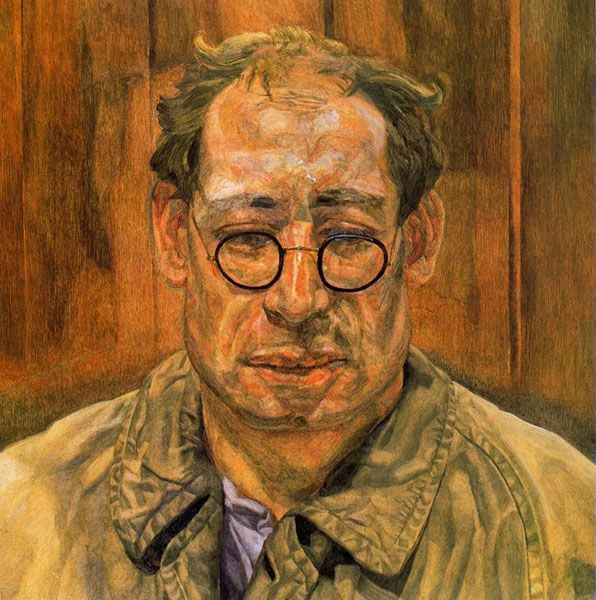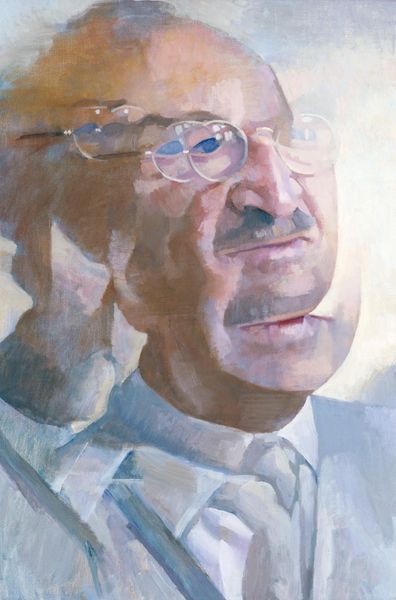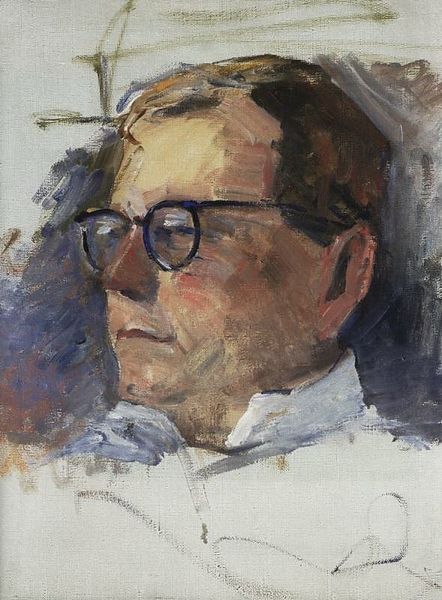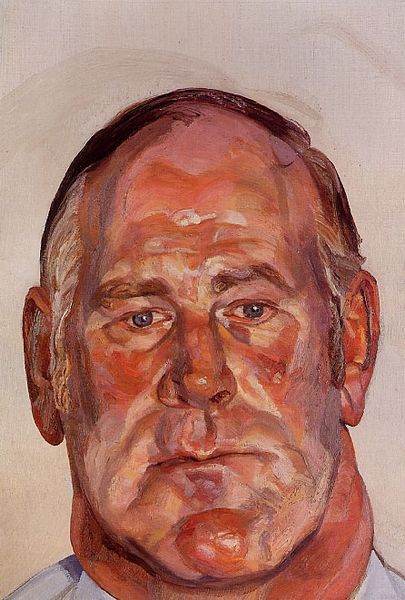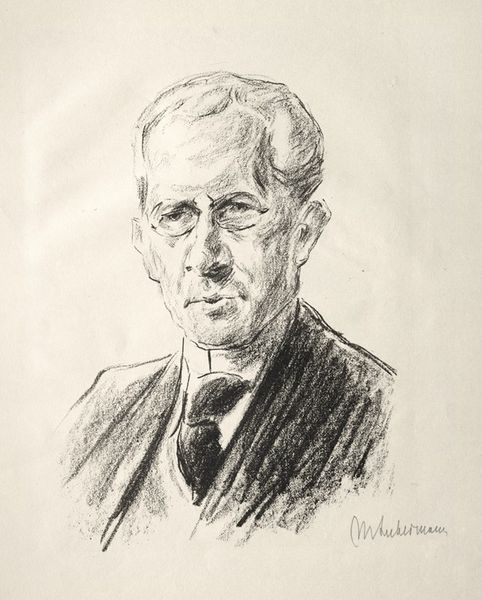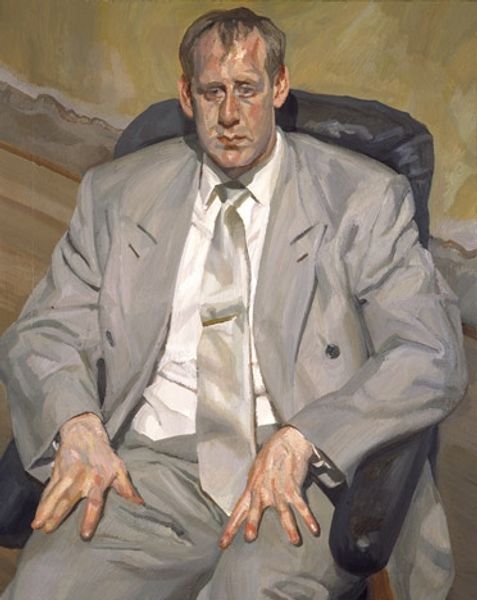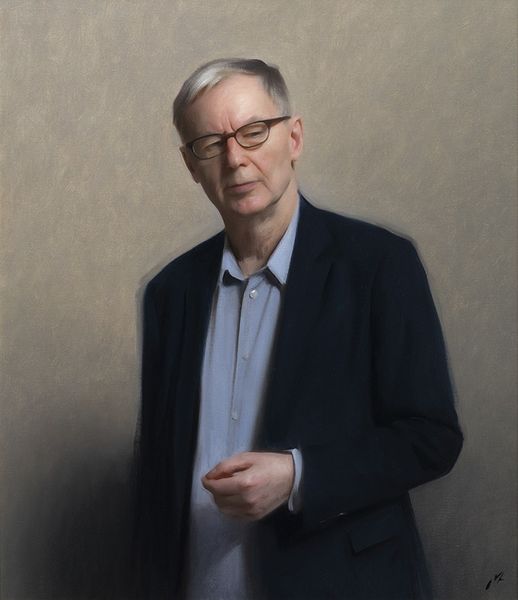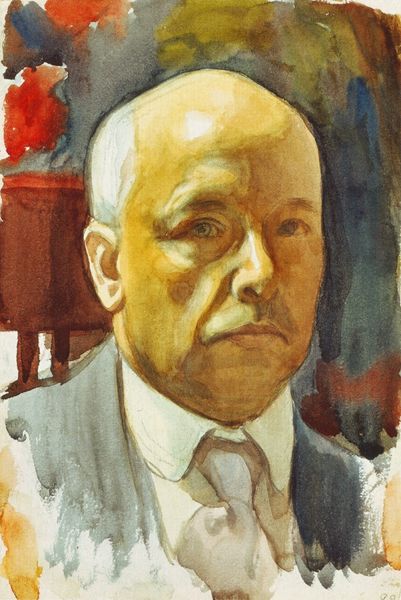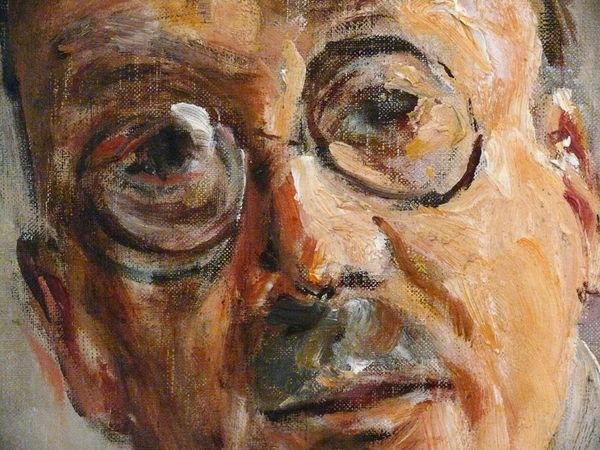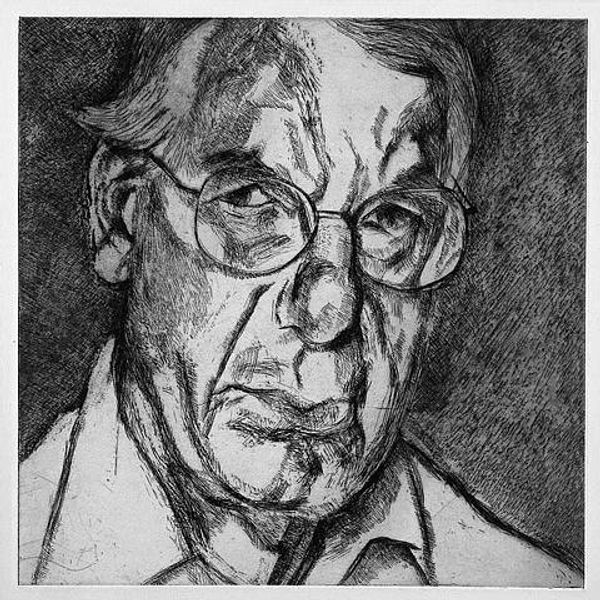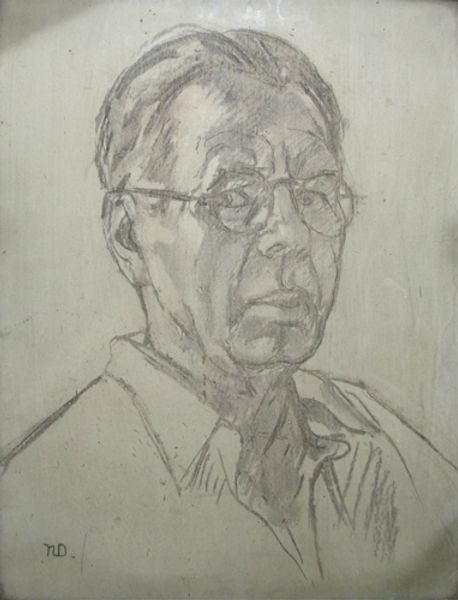
painting, oil-paint, impasto
#
portrait
#
portrait
#
painting
#
oil-paint
#
impasto
#
realism
Copyright: Lucian Freud,Fair Use
Curator: Here we have Lucian Freud’s “Robert Fellowes,” painted in 1999. Freud, known for his unflinching realism, particularly in his portraits, continues that trajectory here. The painting is currently held in a Private Collection. Editor: My first thought? Intensity. Look at that gaze. The impasto gives such texture, like we can almost feel the weight and age etched on his face. It's far from flattering but gripping in its raw honesty. Curator: Freud certainly wasn't about idealization. Robert Fellowes, the Queen's former Private Secretary, is presented with an almost brutal honesty, challenging the conventions of traditional portraiture that usually seeks to aggrandize its subject, especially given the sitter's societal status. The historical weight of the monarchy, its visual representation throughout the centuries, Freud completely ignores here. Editor: Right, instead of polished courtly imagery, we see this incredibly worked surface, layers and layers of oil paint. Think about the labour involved, the time spent applying these meticulous dabs of paint. And for what? To show this man's vulnerability? It's a fascinating social commentary achieved through the physical act of painting. The flesh tones are almost sickly, hinting at the pressures he faced in service. Curator: Exactly. Consider the role of portraiture in solidifying power. Royal portraits throughout history presented idealized versions of the monarch to project strength and stability. By presenting Fellowes with such stark realism, Freud challenges that very tradition, unveiling the individual behind the public role. Editor: And the visible brushstrokes! They are part of the statement. He makes no attempt to conceal the hand of the artist, highlighting the process of creation, almost as if suggesting that our perceptions are never fully objective, always mediated by material means, even if we are speaking about the upper crust of society. Curator: I agree. The visible texture brings a corporeal, almost tactile quality. In the socio-political context, it's a very powerful visual statement on authority, aging, and the pressures of power, as well as an interesting play on art as labour. Editor: It really makes you think about the politics of art making and what the production process reveals about society itself. The visible process humanizes the subject. Curator: Definitely food for thought, as Freud’s approach to portraiture raises pertinent questions about social conventions and the nature of representation. Editor: Indeed. This painting has reminded me that portraits can challenge norms far beyond merely visual representation and technical ability.
Comments
No comments
Be the first to comment and join the conversation on the ultimate creative platform.

